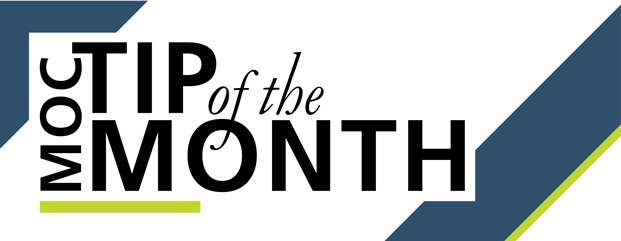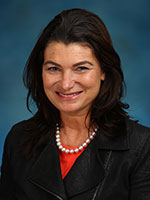MOC Tip of the Month
Kim Blake, MBBS, FRCPC
[Section 3 credit opportunity] For easy and effective patient feedback, try a communication guide


Years ago, I developed an interviewing tool that I now use to claim most of my Section 3 MOC Program credits. It’s called the Structured Communication Adolescent Guide (SCAG). I want to share this simple but rigorous tool so that you too can leverage it for your Section 3 learning, whatever your patient demographic.
This tool can be adapted for other patient demographics
I’m a pediatrician at Dalhousie University, but any physician and surgeon who interacts with adolescent patients can benefit from SCAG. Or, if you don’t work with many adolescents or young adults, you can adapt the SCAG to suit your own discipline or scope of practice. For example, I helped some Geriatric Medicine colleagues adapt it into the Comprehensive Geriatric Assessment Guide (CGAG). If you need any support, please feel free to contact me. I would be more than happy to work with you.
SCAG: What’s in it for you?
- A wonderful source of candid, articulate and honest feedback about your performance from your adolescent and young adult patients (that you can claim for Section 3 MOC credit).
- A reduced rate of misdiagnoses (your patients will trust you more and be more likely to disclose significant psychosocial information that could influence your treatment plan).
- An improved adolescent-interviewing skill set (explaining confidentiality, respecting anonymity, separating from parents, and discussing risk-taking behaviours with sensitivity and tact).
- A deeper appreciation of the Royal College’s CanMEDS Communicator Role competencies (something we all struggle with!)
3 simple steps to use the SCAG
The SCAG is a 33-item checklist derived from the Calgary Cambridge Observation Guide. It was most recently updated in 2016 to include modern behaviours, such as cyberbullying, vaping, screen time and social media.
Download the SCAG here and print out several copies to keep in your interview rooms
- During your clinical interview, explain to your adolescent patient that you’re looking for personal feedback and ask them if they would be open to filling out this questionnaire at the end of the appointment. Give them the SCAG and ask them in particular to fill out the comments section — one or two items you did well or could improve on. Repeat with a couple of adolescent patients a week for one or two months.
- At the end of the month, review your SCAGs. Are you getting a lot of zeros or ones? See if there’s something in the comments section that you can act on to improve. Are you getting a lot of twos? Congratulations are in order, but don’t rest on your laurels. Look for trends and other more subtle ways to improve.
- Most importantly, keep using the SCAG several times a year. Keep working on the areas where you can improve or that are uncomfortable for you as a communicator, and keep doing the interview properly. For example, don’t skip confidentiality discussions because it’s important for the patients — as well as their parents — to hear this part. (The value of confidentiality being explained and discussed is also supported in the literature.) And don’t skip interviewing the adolescent alone — this is where you’ll get the most honesty.
My story: Conversations around sexual identity
Even after many years of using the SCAG, I am continually learning things about myself that I can improve upon thanks to this checklist.
For example, I was once talking to a young lady about boyfriends and girlfriends, and I noticed that she was hedging. When I asked “how do you see yourself?” she told me she wasn’t sure if she was male or female, and where she fits. She commented in the SCAG that she could see I was uncomfortable but was glad that I asked. She comes from a strict family background and was grateful that we had discussed confidentiality.
In another example, when a different female patient told me about her boyfriend, I asked her about past boyfriends. It was an insight to me when her mother later told me that her daughter said she was a lesbian. I realized that because the young lady told me about a boyfriend, I had assumed she had also had previous boyfriends.
After I reflected on these experiences, I came to the conclusion that while I was strong in assessing depression, eating habits, social media and bullying, I was weaker in the area of discussing sexual preferences and sexual identity. So much of our medicine today is about lifestyle and not what I saw during my training; perceptions of gender and sexual identity have changed significantly over the years.
I created a CPD goal in my MAINPORT ePortfolio to “raise my awareness of the transgender community by reading more articles and paying more attention to where talk about sexual identity is going. I’m going to improve how I broach sexual identity during the interviewing process. Training myself to ask exploratory questions instead of absolute ones may help me to avoid making assumptions.”
This is why I like the SCAG—for me, it not only generates good observations that have enhanced my self-awareness, it also opens up dialogue to helps me become a better physician. And I hope it does the same for you!
Did you know? The SCAG is currently taught to medical students at Dalhousie University, Queen’s University, the University of Calgary and the University of British Columbia. We have demonstrated its utility as a source of structured feedback and validity as an alternative to direct observation by a peer. We have also proven that it improves performance in residency following a study with PGY1 residents from eight specialties (four medical and four surgical).
Share "what works" for you!
Big or small, we'd love to hear your MOC tip. Submit a tip through our online form. If we use it, we'll send it to our 40,000+ members in an upcoming issue of Dialogue (attributed to you). We'll also post it on our website where it can be searched and read by all our MOC Program participants.
What people are saying about MOC tips
“Thank you for your MOC Tip of the Month. I very much enjoyed it and used it to create a template for developing a PLP. As the CPD Chair for the Canadian Society of Otolaryngology-Head and Neck Surgery, I am trying to assist our members in their CPD activities. We will use the template at our annual meeting this year for both the accredited and non-accredited educational activities.” — Gigi Osler, MD, FRCSC, 2017 President-Elect of the Canadian Medical Association
“I received several positive comments about my PLP tip. People felt the steps were helpful with the use of the personal example. In fact, one person is planning to attend a course on Indigenous health!” — Shahid Ahmed, MD, FRCPC, MOC tip author